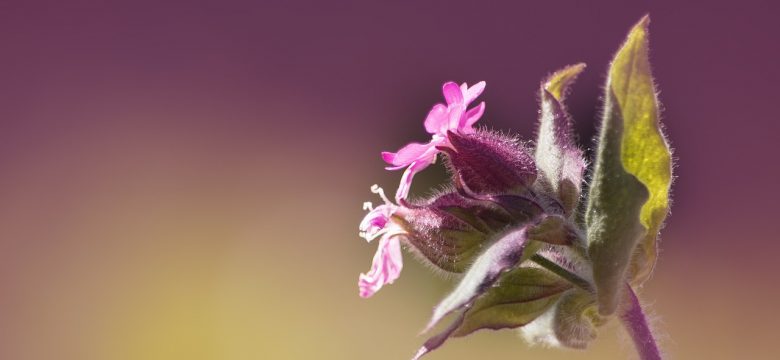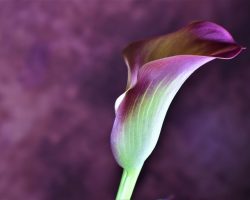The History and Culture of Carnations
This article delves into the captivating history and cultural significance of carnations, a beloved flower renowned for its exquisite beauty and enchanting fragrance. Carnations have captivated the hearts of people for centuries, and their allure continues to thrive in modern times. Let us embark on a journey to unravel the fascinating origins, symbolic meanings, and diverse cultural significance of these remarkable blooms.
The Origins of Carnations
The origins of carnations can be traced back to ancient Greece and Rome, where they were highly valued for their beauty and fragrance. These flowers were cultivated by the Greeks and Romans, who believed that they were a symbol of love and affection. In fact, the name “carnation” is derived from the Latin word “carnis,” which means flesh, referring to the pink color of the flower.
Throughout history, carnations have been cultivated and appreciated by various cultures around the world. They were particularly popular during the Renaissance period in Europe, where they were used in artwork and as decorative elements in gardens. Carnations also gained popularity in the Middle East, where they were used in traditional ceremonies and celebrations.
Today, carnations are cultivated in many different countries, including the Netherlands, Colombia, and Kenya. They are loved for their long-lasting blooms and wide range of colors, including pink, red, white, and yellow. Whether used in floral arrangements, gifts, or as a symbol of love, carnations continue to be cherished and appreciated for their rich history and cultural significance.
Symbolism and Meaning
The symbolism and meaning of carnations are diverse and have been associated with various emotions and occasions throughout history. These beautiful flowers have captured the attention and admiration of people around the world, thanks to their vibrant colors and delicate petals.
One of the most common symbolic meanings of carnations is love and admiration. They are often used to express deep affection and appreciation for someone. In fact, carnations have been regarded as a symbol of love and romance for centuries. They are frequently given as gifts on Valentine’s Day or anniversaries to convey feelings of love and devotion.
However, the symbolism of carnations goes beyond romantic love. Different colors of carnations carry different meanings. For example, red carnations symbolize deep love and affection, while pink carnations represent maternal love and gratitude. White carnations are often associated with purity and innocence.
Carnations also hold significance in mourning and remembrance. They are commonly used in funeral arrangements and memorial services to honor and remember loved ones who have passed away. The white carnation, in particular, is often used to symbolize pure love and eternal loyalty to the departed.
Furthermore, carnations have cultural significance in different regions of the world. In some countries, they are considered a lucky charm and are believed to bring good fortune and prosperity. In others, they are used to symbolize honor and respect.
In conclusion, carnations are not only beautiful flowers but also carry deep symbolic meanings. Whether it is expressing love and admiration, mourning a loss, or celebrating a special occasion, carnations have played a significant role in human culture and emotions.
Carnations in Art and Literature
Carnations have long been a source of inspiration for artists and writers, thanks to their beauty and symbolic significance. In art, carnations have been depicted in various forms, from still-life paintings to intricate floral arrangements. Their vibrant colors and delicate petals make them a popular subject for artists seeking to capture their essence on canvas. Carnations have also been used as symbols in literature, representing love, beauty, and even rebellion.
In the world of literature, carnations have been mentioned in numerous works, often as a symbol of love and affection. In William Shakespeare’s play “Romeo and Juliet,” the character Juliet refers to a rose by any other name as sweet, highlighting the power of a name and the beauty of a flower. Similarly, in Oscar Wilde’s novel “The Picture of Dorian Gray,” carnations are used to represent the fleeting nature of beauty and the corrupting influence of society.
Throughout history, carnations have held a special place in the hearts of artists and writers, serving as a muse and a symbol of various emotions and ideas. Their presence in art and literature continues to inspire and captivate audiences, reminding us of the timeless beauty and significance of these beloved flowers.
Carnations in Traditional Celebrations
Carnations have been an integral part of traditional celebrations and ceremonies around the world for centuries. These beautiful flowers hold deep symbolic meanings and are often used to convey joy, luck, and honor in various cultures.
In many Eastern cultures, carnations are a common sight during traditional ceremonies and festivals. They are often used as decorations in temples and homes, symbolizing good fortune and prosperity. In some cultures, red carnations are associated with luck and are believed to bring good fortune to those who possess them.
In Western cultures, carnations are widely used in weddings and other special occasions. They are often included in bridal bouquets, corsages, and centerpieces, symbolizing love, purity, and good luck. Carnations are also commonly given as gifts on Mother’s Day, as they represent maternal love and affection.
Furthermore, carnations have been a symbol of honor and respect in many cultures. They are often used to pay tribute to loved ones during funerals and memorial services. White carnations, in particular, are associated with remembrance and are often placed on graves to honor the deceased.
Overall, carnations play a significant role in traditional celebrations and ceremonies worldwide. Their vibrant colors and delicate fragrance add beauty and meaning to these special occasions, making them a cherished part of cultural traditions.
Carnations in Modern Culture
Carnations have maintained their popularity in modern culture, being widely used in various ways. One of the most common uses of carnations in modern culture is in floral arrangements. Their vibrant colors and delicate petals make them a popular choice for bouquets and centerpieces. Whether it’s a birthday, anniversary, or any other special occasion, carnations add a touch of beauty and elegance to any floral arrangement.
In addition to floral arrangements, carnations are also commonly used as gifts. They make for thoughtful and meaningful presents, symbolizing love, admiration, and appreciation. Whether it’s a single carnation or a bouquet, giving someone a carnation is a gesture that is sure to be appreciated.
Carnations also hold a special place in weddings and other special occasions. They are often incorporated into bridal bouquets, boutonnieres, and corsages, adding a touch of romance and beauty to the celebrations. Their versatility allows them to complement a wide range of color schemes and themes, making them a popular choice among couples.
Cultivation and Varieties
Carnations are a diverse group of flowers that come in a wide range of colors and varieties. From the classic red and white carnations to the more unique striped and variegated ones, there is a carnation for every taste and occasion. Some popular varieties include the Standard Carnations, which have a single large flower on each stem, and the Spray Carnations, which have multiple smaller flowers on each stem.
Cultivating carnations requires careful attention to detail and specific techniques. These flowers thrive in well-drained soil and require regular watering to keep the soil moist but not waterlogged. They also benefit from regular fertilization to promote healthy growth and blooming. Carnations are typically grown from seeds or cuttings, and they can be grown both indoors and outdoors. Indoor cultivation allows for more control over the growing conditions, while outdoor cultivation allows the plants to benefit from natural sunlight and fresh air.
| Varieties | Description |
|---|---|
| Standard Carnations | Large flowers, single bloom per stem |
| Spray Carnations | Multiple smaller flowers per stem |
| Miniature Carnations | Compact plants, smaller flowers |
| Florist Carnations | Long-lasting flowers, often used in floral arrangements |
When cultivating carnations, it is important to provide them with proper support, such as stakes or trellises, to prevent the stems from bending or breaking under the weight of the flowers. Regular pruning is also necessary to remove dead or wilted flowers and promote new growth. Additionally, protecting the plants from pests and diseases, such as aphids and powdery mildew, is essential for their health and longevity.
Overall, cultivating carnations can be a rewarding and enjoyable experience. With the right techniques and care, these beautiful flowers can thrive and bring joy to any garden or floral arrangement.
Cultural Significance in Different Regions
The cultural significance of carnations varies across different regions of the world, with each culture attaching its own meanings and symbolism to this beautiful flower. Let’s take a closer look at how carnations are revered in various parts of the globe.
In Eastern cultures, carnations are often used in traditional ceremonies and festivals. In Japan, for example, carnations symbolize love, affection, and purity. They are commonly given as gifts on Mother’s Day, expressing gratitude and appreciation for mothers. In China, carnations are associated with good luck and are often used in festive decorations during the Lunar New Year. These vibrant flowers are also used in traditional Korean weddings, symbolizing the couple’s pure love and commitment.
In Western cultures, carnations have been embraced for their beauty and versatility. They are frequently used in weddings, symbolizing love, fascination, and distinction. Different colors of carnations convey different meanings – white carnations represent purity and luck, while red carnations symbolize deep love and admiration. Carnations are also a popular choice for bouquets and floral arrangements, adding a touch of elegance and charm to any occasion.
Carnations hold cultural significance in the Americas and other regions as well. In Mexico, these flowers are an integral part of the Day of the Dead celebrations, where they are used to honor and remember loved ones who have passed away. In some South American countries, such as Colombia and Venezuela, carnations are considered a national flower and are highly cherished. They are often used in traditional dances, festivals, and as decorative elements in special events.
Overall, carnations have a rich cultural heritage and are deeply woven into the fabric of various societies around the world. Their diverse symbolism and widespread popularity make them a beloved flower in different regions, bringing joy, love, and beauty to people’s lives.
Carnations in Eastern Cultures
Carnations hold a significant role in Eastern cultures, where they are deeply woven into traditional ceremonies and festivals. These beautiful flowers are cherished for their vibrant colors and delicate fragrance, making them a popular choice for various cultural celebrations.
In countries like Japan, carnations are often used in the traditional art of Ikebana, which is the Japanese art of flower arrangement. The intricate and harmonious compositions created with carnations reflect the cultural values of simplicity, balance, and beauty. Carnations are also frequently incorporated into tea ceremonies, symbolizing purity and grace.
In China, carnations are associated with luck and fortune. They are a common sight during the Chinese New Year celebrations, adorning homes and businesses as a symbol of prosperity and good fortune for the upcoming year. Additionally, carnations are used in traditional Chinese weddings, representing love, fidelity, and a happy marriage.
In India, carnations play a significant role in religious ceremonies and festivals. They are often offered as garlands to deities in temples, signifying devotion and reverence. Carnations are also used in wedding ceremonies, where they symbolize the purity and beauty of the union between two individuals.
The cultural significance of carnations in Eastern cultures extends beyond their use in specific ceremonies. These flowers are deeply ingrained in the traditions and customs of the region, representing love, luck, purity, and beauty.
Carnations in Western Cultures
Carnations have been embraced in Western cultures for centuries, and their popularity continues to grow. One of the most common uses of carnations in Western cultures is in weddings. These beautiful flowers are often incorporated into bridal bouquets, corsages, and centerpieces, adding a touch of elegance and romance to the special day. Carnations are also a popular choice for other occasions such as anniversaries, birthdays, and Mother’s Day.
In addition to their use in floral arrangements, carnations also hold symbolic meaning in Western cultures. They are often associated with love, fascination, and distinction. Red carnations, in particular, are often seen as a symbol of deep love and affection, making them a popular choice for romantic gestures and declarations of love.
Furthermore, carnations are often used to represent various occasions and sentiments. For example, white carnations are often used to symbolize purity and innocence, making them a popular choice for christenings and baptisms. Pink carnations are often associated with gratitude and admiration, making them a thoughtful gift for friends and loved ones. The versatility of carnations in Western cultures is truly remarkable.
The Origins of Carnations
Carnations have a fascinating history that dates back thousands of years. These beautiful flowers are believed to have originated in the Mediterranean region, specifically in Greece and Italy. The name “carnation” is derived from the Latin word “carnis,” which means flesh, due to the flower’s pinkish hue.
Throughout history, carnations have been highly valued for their beauty and fragrance. They were cultivated by the ancient Greeks and Romans, who used them in various religious ceremonies and festivals. In fact, carnations were considered sacred flowers in ancient Rome and were often used to create garlands and wreaths.
During the Renaissance period, carnations gained popularity in Europe, particularly in France and England. They were highly sought after for their vibrant colors and delicate petals. Carnations were often used in floral arrangements and bouquets, adorning the homes of the wealthy and the royal courts.
Today, carnations are cultivated worldwide, with different varieties and colors available. They are a popular choice for floral arrangements, weddings, and special occasions. The long-lasting nature of carnations makes them a practical and beautiful choice for any event or celebration.
| Origins | Significance | Cultivation |
|---|---|---|
| Greece and Italy | Religious ceremonies and festivals | Worldwide cultivation |
| Ancient Rome | Sacred flowers | Various varieties and colors |
| Renaissance period | Popularity in Europe | Used in floral arrangements and bouquets |
Frequently Asked Questions
- What are the origins of carnations?
Carnations have a rich history that dates back over 2,000 years. They were originally cultivated in the Mediterranean region, particularly in Greece and Italy. These beautiful flowers were highly valued by the ancient Greeks and Romans for their vibrant colors and sweet fragrance.
- What do carnations symbolize?
Carnations hold various symbolic meanings depending on their color. Red carnations symbolize love and admiration, while pink carnations represent gratitude and appreciation. White carnations are often associated with purity and innocence, and yellow carnations symbolize friendship and joy. Additionally, carnations are sometimes used to convey messages of remembrance and mourning.
- How have carnations influenced art and literature?
Carnations have long been a source of inspiration for artists and writers. They have been depicted in numerous paintings, sculptures, and poems throughout history. The delicate beauty and diverse colors of carnations have made them a popular subject in artistic creations, symbolizing love, beauty, and the fleeting nature of life.
- How are carnations used in traditional celebrations?
Carnations play a significant role in traditional celebrations and ceremonies around the world. They are often used in floral arrangements and bouquets for weddings, symbolizing joy, luck, and fidelity. Carnations are also commonly used in religious ceremonies, festivals, and other cultural events to represent honor and purity.
- Why are carnations popular in modern culture?
Carnations continue to be popular in modern culture due to their timeless beauty and versatility. They are frequently used in floral arrangements for various occasions, including birthdays, anniversaries, and graduations. Carnations are also a popular choice for wedding bouquets and centerpieces, adding elegance and charm to the celebrations.
- What are the different varieties of carnations?
Carnations come in a wide range of varieties, each with its own unique characteristics. Some popular varieties include spray carnations, which have multiple blooms per stem, and standard carnations, which feature larger single blooms. Other varieties include mini carnations, fringed carnations, and dwarf carnations.
- How are carnations significant in different cultures?
Carnations hold cultural significance in various regions of the world. In Eastern cultures, such as Japan and China, carnations are often used in traditional ceremonies and festivals, symbolizing purity and good fortune. In Western cultures, carnations are commonly associated with love and are frequently used in weddings and other special occasions.





